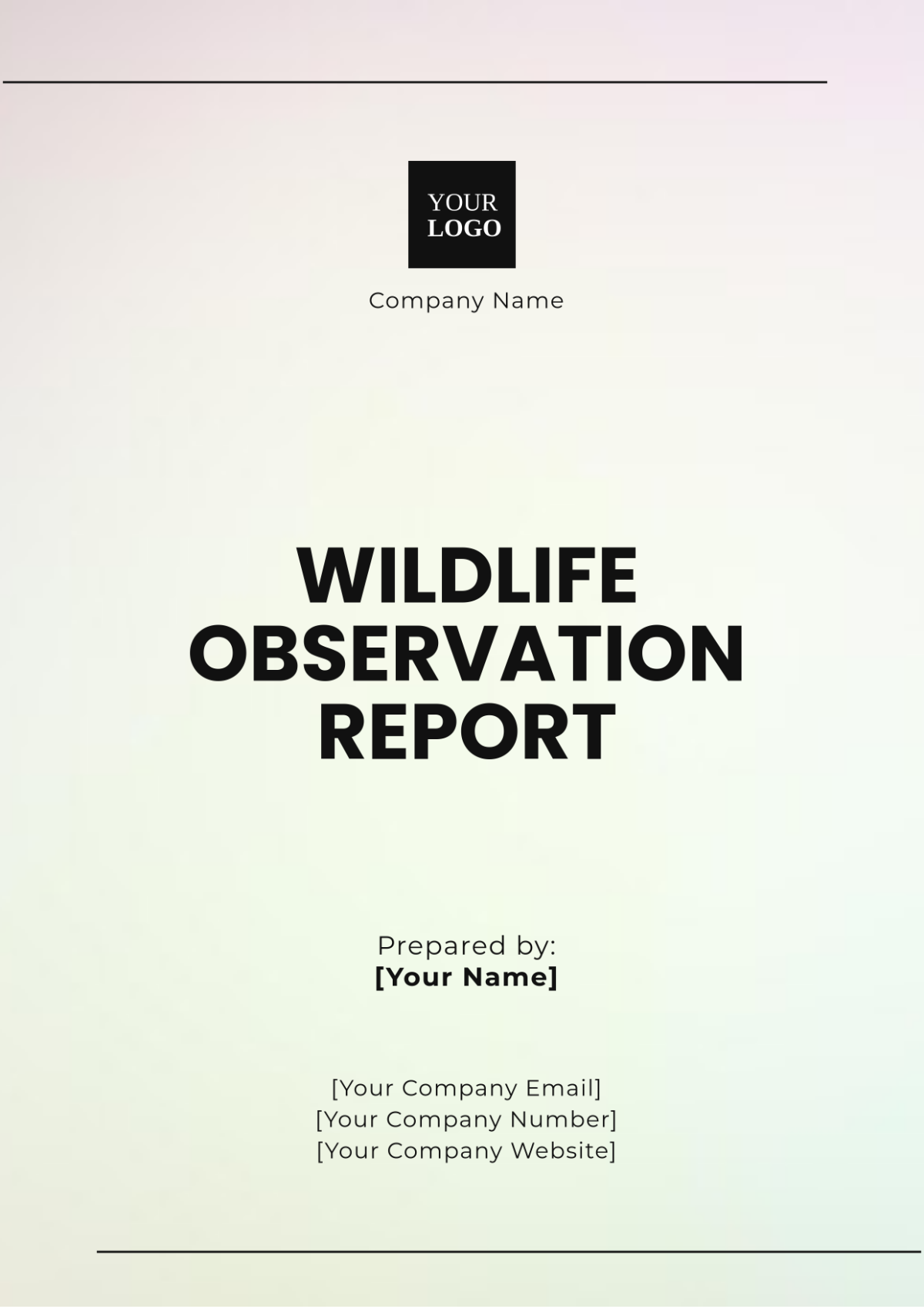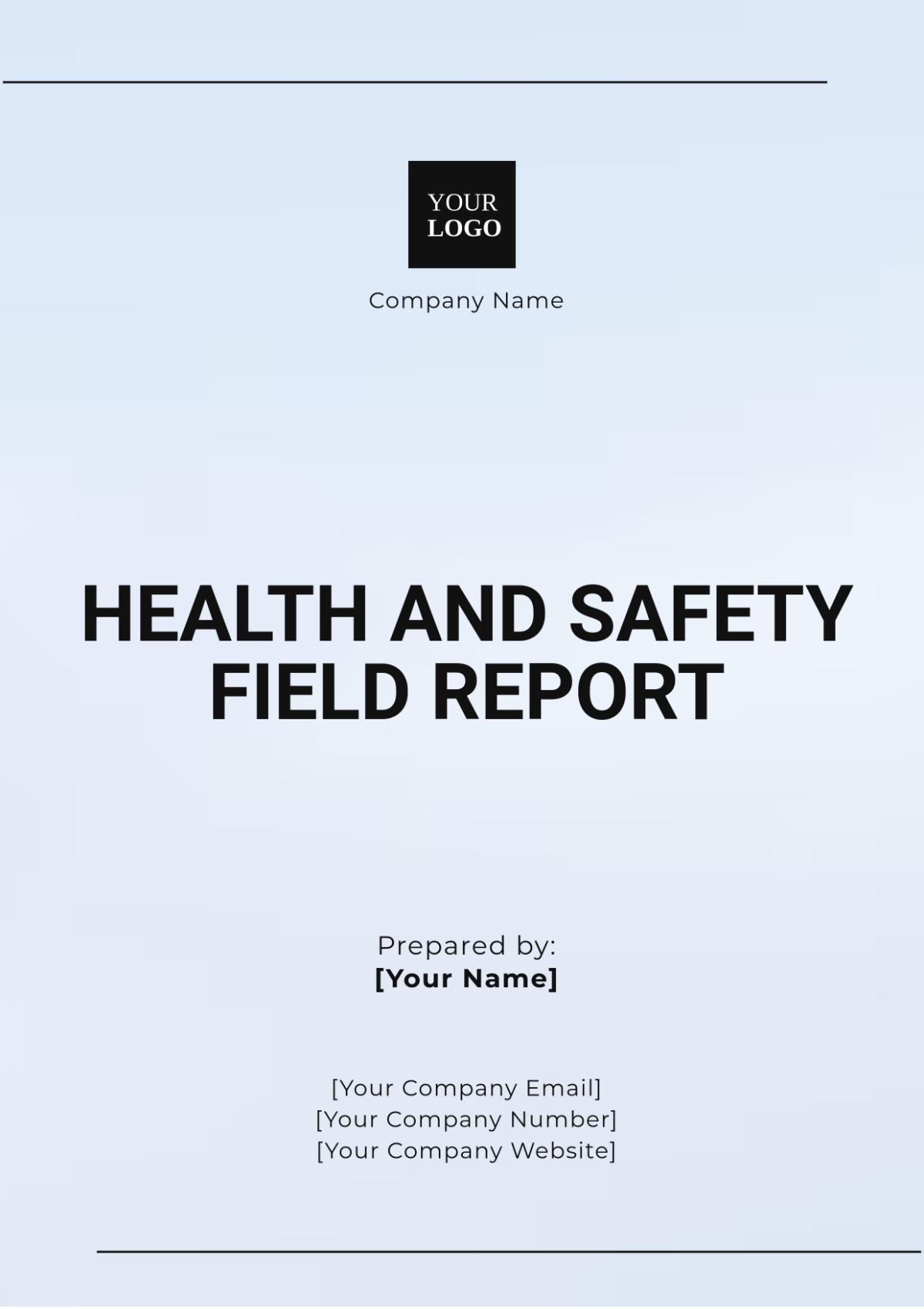Environmental Field Report
Site Name: | Willow Creek Nature Reserve |
Location: | [Your Company Address] |
Date of Report: | January 15, 2050 |
Company/Organization: | [Your Company Name] |
Contact Information: | [Your Company Number], [Your Company Email], [Your Company Website] |
I. Introduction
This Environmental Field Report presents a thorough evaluation of the environmental conditions at Willow Creek Nature Reserve. The assessment was carried out from December 2050 to January 2051 to determine the current environmental status of the site, with particular emphasis on the effects of climate change, pollution levels, and local biodiversity. The report aims to:
Assist in maintaining compliance with regional and international environmental regulations.
Guide possible remediation strategies for environmental hazards.
Support the ongoing efforts of conservationists and government agencies in preserving and improving the health of the ecosystem.
II. Methodology
A. Data Collection
The data collection process was conducted between December 15, 2050, and January 5, 2051. To ensure the accuracy and reliability of the findings, a range of state-of-the-art environmental monitoring techniques were employed:
Soil Sampling
Soil was collected from 10 distinct locations across the site, with samples taken at various depths (0-10 cm, 10-30 cm, and 30-50 cm) to assess contamination and composition.
Laboratory analysis focused on detecting heavy metals (lead, cadmium, arsenic) and organic pollutants, including petroleum hydrocarbons.
Water Quality Testing
Water samples were collected from Willow Creek and its surrounding wetland areas using portable field sensors that measured parameters such as pH, dissolved oxygen, turbidity, heavy metals, and organic contaminants.
Chemical analysis in laboratories assessed nitrate, phosphate, and microbial contamination levels.
Air Quality Monitoring
Continuous air quality sensors were deployed at four strategic points around the site. They recorded concentrations of pollutants such as PM2.5, CO2, VOCs, and ozone.
Special attention was given to volatile organic compounds (VOCs) originating from nearby industrial activities.
Wildlife Surveys
Camera traps and direct observation were used to document species diversity. Several days of direct field observation recorded activity patterns of both protected and non-protected species.
Bird and amphibian species were the primary focus, with additional monitoring of small mammals, reptiles, and insects.
Vegetation Assessment
Vegetation plots were established in five key areas of the reserve. The plant species composition, coverage, and health were recorded using remote sensing technology.
Invasive species presence, particularly non-native grasses and shrubs, were noted.
B. Data Analysis
All data collected were analyzed using advanced environmental software that included GIS mapping for spatial analysis. Soil, water, and air quality data were compared with both historical data and global environmental standards, such as those provided by the International Environmental Monitoring Association (IEMA). Statistical software was used for trend analysis and to predict future environmental changes based on observed data.
IV. Findings/Observations
A. Soil Quality
Parameter | Observed Value | Standard Value |
|---|---|---|
pH | 6.2 | 6.0 - 8.0 |
Lead (Pb) | 75 ppm | < 40 ppm |
Cadmium (Cd) | 0.5 ppm | < 0.1 ppm |
Arsenic (As) | 2.1 ppm | < 1.0 ppm |
The soil samples revealed elevated levels of lead and cadmium in certain locations, suggesting contamination from historical industrial activities upstream of Willow Creek. The pH levels were slightly below optimal, indicating potential nutrient deficiencies and soil degradation.
B. Water Quality
Parameter | Observed Value | Standard Value |
|---|---|---|
pH | 7.1 | 6.5 - 8.5 |
Nitrate (NO3) | 12 mg/L | < 10 mg/L |
Phosphate (PO4) | 0.4 mg/L | < 0.3 mg/L |
E. coli | 180 CFU/100mL | < 100 CFU/100mL |
The water quality in Willow Creek shows relatively good compliance with environmental standards. However, elevated nitrate levels, possibly due to agricultural runoff from nearby farmland, require further investigation. The presence of E. coli exceeds the safe limit, indicating localized contamination from animal waste.
C. Air Quality
Air quality monitoring revealed fluctuating levels of VOCs, particularly around the northern boundary of the site, which is near an industrial zone. While PM2.5 levels remained within acceptable limits, transient spikes of ozone and VOCs were recorded during daylight hours, likely due to vehicular emissions and industrial activities.
D. Wildlife and Vegetation
The site is home to a diverse array of wildlife, including several endangered species such as the Eastern Bluebird and the Northern Leopard Frog. However, habitat disruption caused by nearby development threatens to fragment their habitats.
Vegetation surveys showed an abundance of native plant species, though invasive species like Japanese Knotweed and Garlic Mustard were identified in several areas, potentially outcompeting native flora.
V. Analysis/Discussion
The environmental status of Willow Creek Nature Reserve is generally stable, but certain areas require immediate attention:
Soil Contamination: Elevated levels of lead and cadmium indicate the presence of past industrial activities. Remediation strategies, such as phytoremediation or soil replacement, may be necessary to reduce contamination levels and restore soil health.
Water Quality: Nitrate contamination and E. coli presence in water samples indicate the need for enhanced monitoring and possibly implementing buffer zones to prevent agricultural runoff and manage waste near the water source.
Air Quality: VOC spikes are linked to nearby industrial activities, suggesting that air pollution control measures should be introduced to mitigate these transient spikes.
Wildlife and Vegetation: The presence of endangered species underscores the importance of habitat protection, while invasive plant species pose a risk to biodiversity. Immediate measures to control invasive species and protect sensitive habitats are recommended.
VI. Conclusion
Willow Creek Nature Reserve is in generally good environmental health, though several areas of concern, particularly soil contamination and water quality issues, need addressing. Immediate steps should include soil remediation efforts, ongoing monitoring of air and water quality, and protective measures for vulnerable species.
VII. Appendices
A. Soil Sample Locations
Maps detailing the exact locations of soil sampling points within the reserve.
B. Detailed Test Results
Laboratory reports and full data sets related to the soil, water, and air quality tests conducted.
C. Photographic Evidence
Photographs of key site locations, wildlife observations, and affected areas.



























